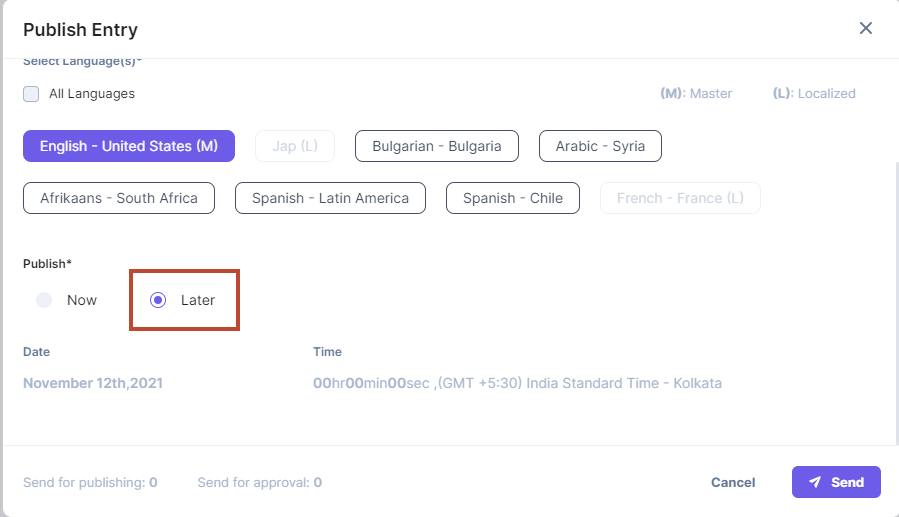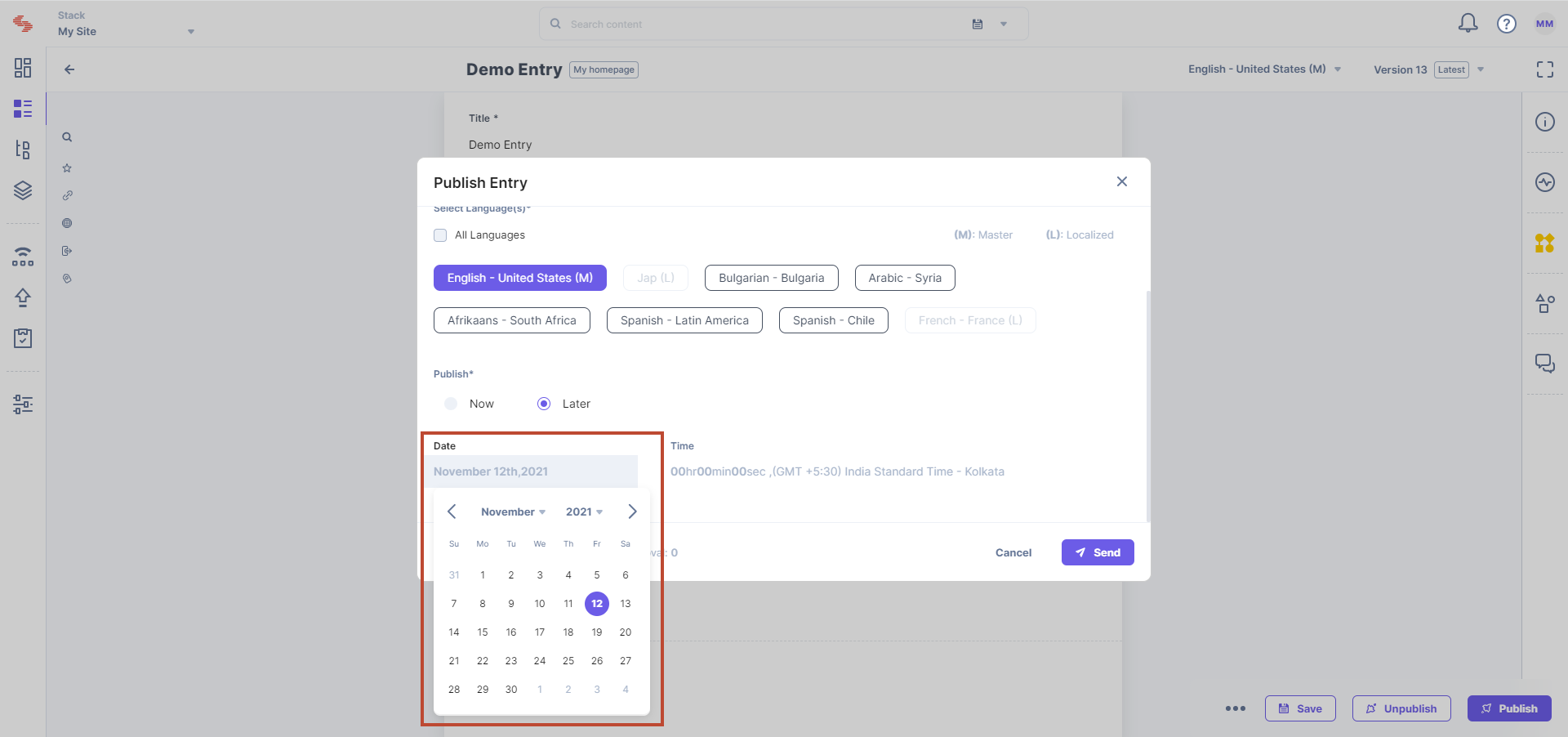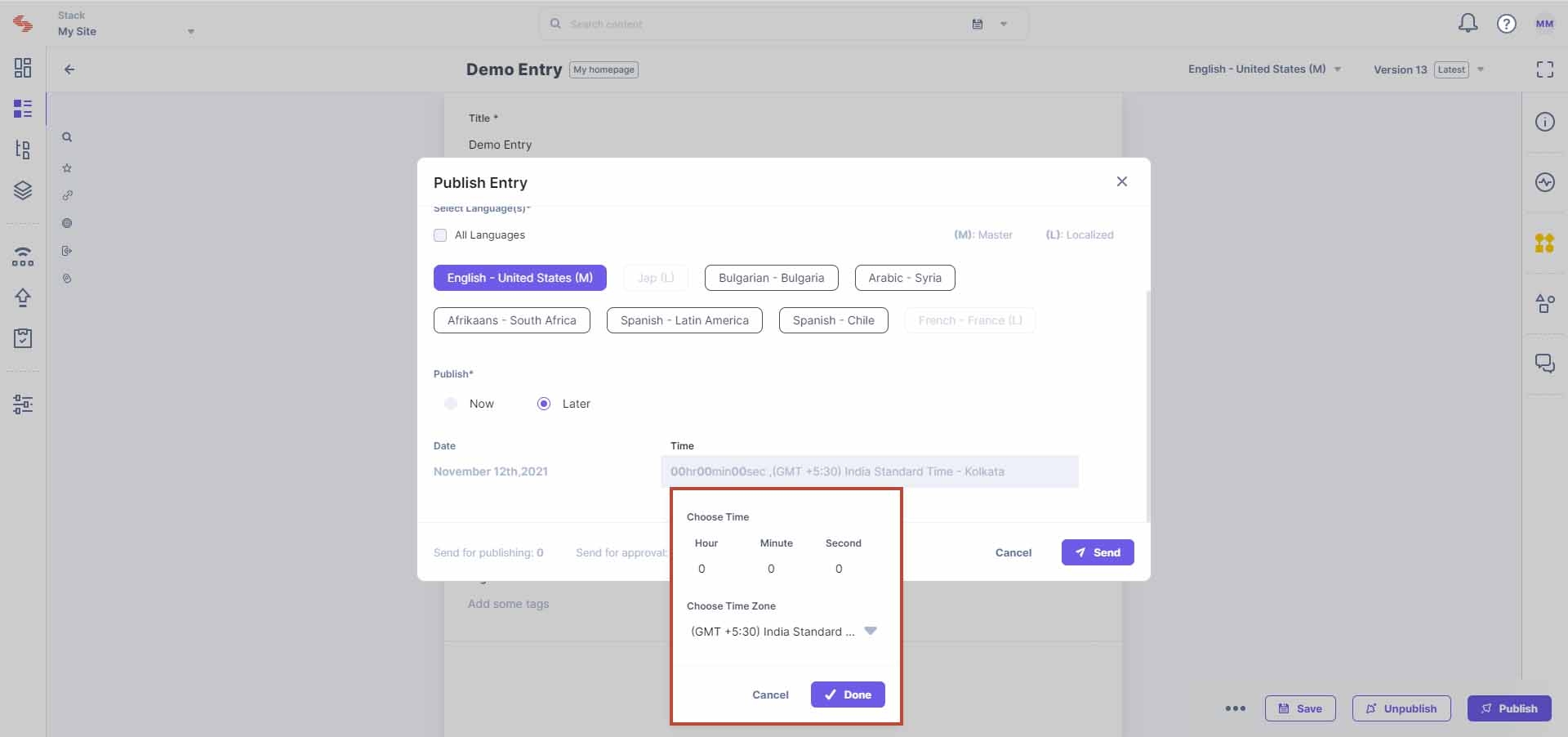Schedule Publish/Unpublish Entries
The Publish option that appears on the Publish Entry and the Unpublish Entry dialog boxes allow you to publish or unpublish an entry either immediately or schedule it with the help of the Now and Later sub-options.
The process to schedule publish/unpublish an entry is the same, so let's consider the scenario of publishing an entry.
Open the entry you want to publish and click on Publish, or click on the "Publish" icon you see on the entry list page.
The Now option publishes an entry immediately, and the Later option allows you to publish an entry at a later date/time i.e., schedule your publishing activity.
When you select the Later sub-option, you will be get the option to select the date and time of publishing.

On clicking the Date box, you will see the option to select a date from a calendar:

Note: When scheduling an entry publish/unpublish, the publishing/unpublishing date cannot extend beyond 12 months.
On clicking the Time box, you will be prompted to enter the exact time (hour-min-sec), and the time zone.

On selecting a time zone that follows daylight saving time (DST), Contentstack will display a help text at the bottom of the textbox that highlights the effective publishing date, time, and time zone along with DST adjustments.
Note: The DST time difference is one hour.
The effective publishing date specifies the publishing date in local time for the user publishing the entry.
Note: Scheduled publishing/unpublishing is also available in Releases. So this makes it easier for content managers to add multiple entries to a Release and then schedule them to be deployed in a future timeline.
Understanding Version Control in Scheduled Unpublishing
When you schedule an unpublish activity for a specific version of an entry on an environment (this applies to releases that are deployed and have entries scheduled to be unpublished), the system will unpublish the latest published version of the entry regardless of the version used to schedule the unpublish activity.
Let's look at an example to understand this better.
Suppose you schedule version 3 of an entry for unpublishing in two days. But in the meantime, you create and publish newer versions and finally publish version 6 of the entry on the same environment, and schedule it to be unpublished in five days. So now you have two scheduled unpublish activities in the coming days for versions 3 and 6.
Now, when the unpublish activity that you had scheduled for version 3 takes effect, the system will unpublish version 6 instead of version 3 as originally intended. This is because the CDN only stores the latest published version of an entry at a time, and the unpublishing action removes (unpublishes) the only currently published version of the entry, regardless of which version was used to schedule the unpublishing action.





.svg?format=pjpg&auto=webp)
.svg?format=pjpg&auto=webp)
.png?format=pjpg&auto=webp)






.png?format=pjpg&auto=webp)